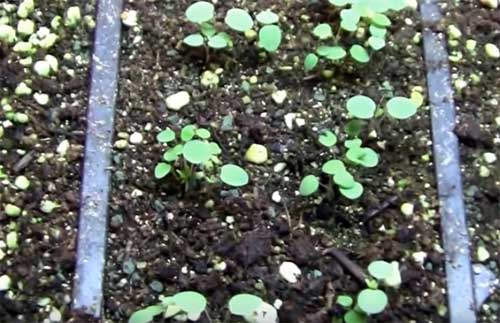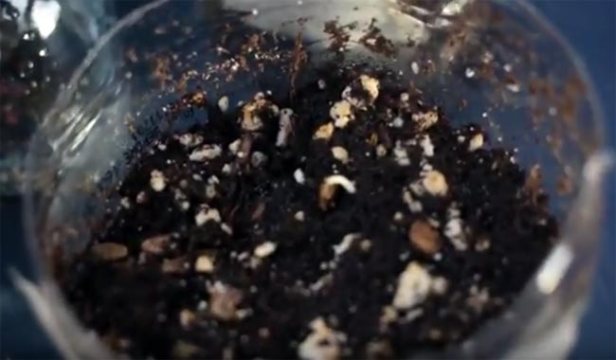Saving money is not the only reason to save seeds from this year’s gardens, although it can be a huge incentive. I am always amazed standing in the store, seed packets in hand, and estimating the cost of the seeds I so carefully chose.
When $70 worth of seeds fits in my small hands, I feel like I must be holding gold. In a sense, I am holding gold!
Anyone who has grown anything from seed understands the figurative value of seed in our past, present, and future relative to gold.
Each little seed holds the secret of life—life of food, shelter, and oxygen for humans and all other living things.

Even seeds that appear to hold only the beauty of flowers to our human eyes, provide food and shelter to other creatures in sustaining the balance of our earth.
Without seeds, the planet would be barren. We could be moving into a future where seeds are endangered through over-hybridization and genetic engineering.
Just as animals have become extinct, so have a surprising number of plants—with no available seed to rescue or bring back the species.
Saving seeds can be fun and full of surprises. Saving seed for your own use or to share with other gardening enthusiasts can be extremely gratifying.
Whether you just want to save money on next year’s seed purchase or save seeds to help continue the pure genetic lines for continued future survival of a species, there are a few details you need to know before getting started.
Only purebred or heirloom seeds are guaranteed to produce purebred offspring. In other words, seeds saved and grown from a hybrid variety of seed will not produce a plant that is an exact copy of the parent plant.
This might be okay if you are growing your own saved seeds for fun. You never know what type of interesting results you might have!
However, if you are relying on the saved seed to produce the same specific food to feed the family for the next year, then do not risk saving seeds from hybrid varieties.
Likewise, do not attempt to save seed from plants grown from genetically engineered seeds. While the seeds might inherit the qualities engineered into the parent plant, the seeds will often be sterile and not germinate.
The next obvious detail and most often asked question is “how?” How do you harvest the seeds and how do you store the seeds so they will be fresh for next year?
This is not so easily answered, as different seeds require different methods of harvesting and/or storage. The best way to ensure success is to research the requirements of each species.
There are, however, some general guidelines to follow for most types of seeds.
Seeds must reach maturity. This often means leaving them on the plant as long as possible.
Some seeds may dry encased and protected on the plant while others in fleshy fruit may need to be cleaned and dried. Past recommendations were to store most seeds in a cool, dry, dark place.
Current recommendations are typically to store most seeds in the refrigerator.
However, there are also seeds that must experience a dormancy period in conditions that simulate a freezing cold winter and there are a few methods to emulate these conditions.
Generalities aside, it is important to the successful life of the seeds to find specific instructions for each type of seed.
Aside from being an heirloom, what factors should be considered when deciding which seeds to save and not save?
Cost, availability, favored varieties, ease of harvest, purpose, and availability of proper storage conditions are all aspects to consider.
If a packet of 200 seeds of your favorite tomato is commonly available for about $1.00 from any store or catalog, then it might not be worth the time and labor to clean and dry the seeds.
If you want to give them to your friends or participate in a seed exchange, then the extra time and effort to save inexpensive, abundantly available seeds will likely be justified.
Imagine how many seeds are in just one tomato. This year, I discovered how much I love hollyhocks.

Hollyhocks are an easy to grow perennial, bloom all summer and into fall, are hardy to zone 2 and 3 (depending on the variety), and the flowers provide a tropical flair that otherwise is lacking outdoors in my climate.
I want to plant A LOT MORE next year. However, the seeds run $2-3 for a packet of 15-50 seeds. Not too bad for 50 seeds, but for 15? I also discovered that each spent flower develops a pod with about 30 seeds and each stalk can produce about 20 pods—less for smaller varieties, more for taller varieties.
The seeds are large and easy to harvest. Dried on the plant, they are ready to store upon harvesting. Potentially producing several hundred seeds, this certainly seems like a perfect circumstance to save seeds with little effort.
Stored properly, some seeds will remain viable for many years. I found some 15 year old rhubarb seeds (harvested from a very mature clump of rhubarb) stashed in a paper sack and forgotten in a dark corner of the basement.
The seeds had a 30% germination rate and the two-year-old plants are looking fabulous! So never throw away saved seeds with the idea that they “might” be too old.
If ever the species becomes endangered, you “might” have the few remaining resources to help re-establish it.
Regardless if you are saving seeds for pure joy and personal satisfaction, remember the impact you will have in the future cycle of life on earth.